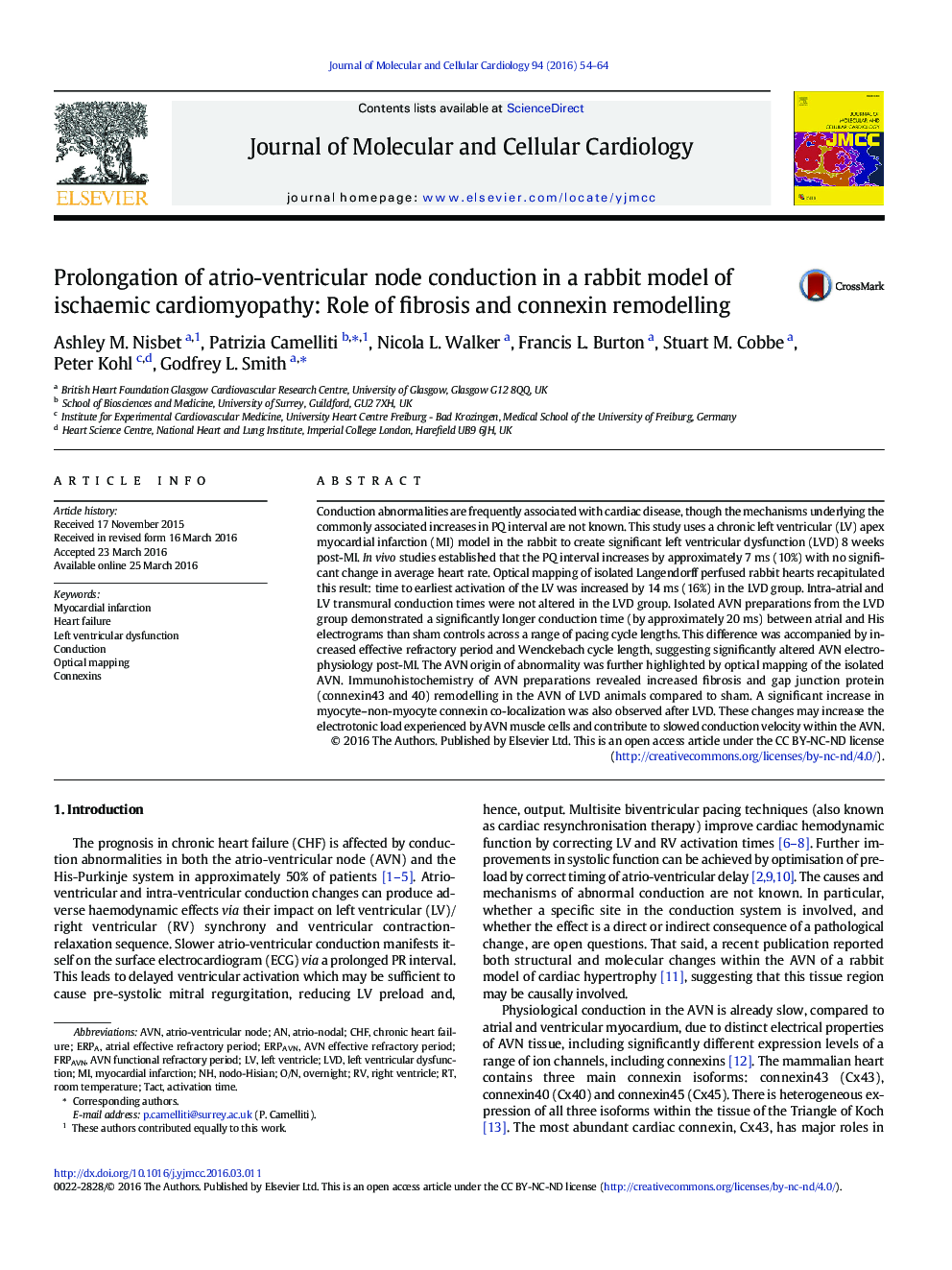| Article ID | Journal | Published Year | Pages | File Type |
|---|---|---|---|---|
| 8473818 | Journal of Molecular and Cellular Cardiology | 2016 | 11 Pages |
Abstract
Conduction abnormalities are frequently associated with cardiac disease, though the mechanisms underlying the commonly associated increases in PQ interval are not known. This study uses a chronic left ventricular (LV) apex myocardial infarction (MI) model in the rabbit to create significant left ventricular dysfunction (LVD) 8Â weeks post-MI. In vivo studies established that the PQ interval increases by approximately 7Â ms (10%) with no significant change in average heart rate. Optical mapping of isolated Langendorff perfused rabbit hearts recapitulated this result: time to earliest activation of the LV was increased by 14Â ms (16%) in the LVD group. Intra-atrial and LV transmural conduction times were not altered in the LVD group. Isolated AVN preparations from the LVD group demonstrated a significantly longer conduction time (by approximately 20Â ms) between atrial and His electrograms than sham controls across a range of pacing cycle lengths. This difference was accompanied by increased effective refractory period and Wenckebach cycle length, suggesting significantly altered AVN electrophysiology post-MI. The AVN origin of abnormality was further highlighted by optical mapping of the isolated AVN. Immunohistochemistry of AVN preparations revealed increased fibrosis and gap junction protein (connexin43 and 40) remodelling in the AVN of LVD animals compared to sham. A significant increase in myocyte-non-myocyte connexin co-localization was also observed after LVD. These changes may increase the electrotonic load experienced by AVN muscle cells and contribute to slowed conduction velocity within the AVN.
Keywords
Related Topics
Life Sciences
Biochemistry, Genetics and Molecular Biology
Cell Biology
Authors
Ashley M. Nisbet, Patrizia Camelliti, Nicola L. Walker, Francis L. Burton, Stuart M. Cobbe, Peter Kohl, Godfrey L. Smith,
